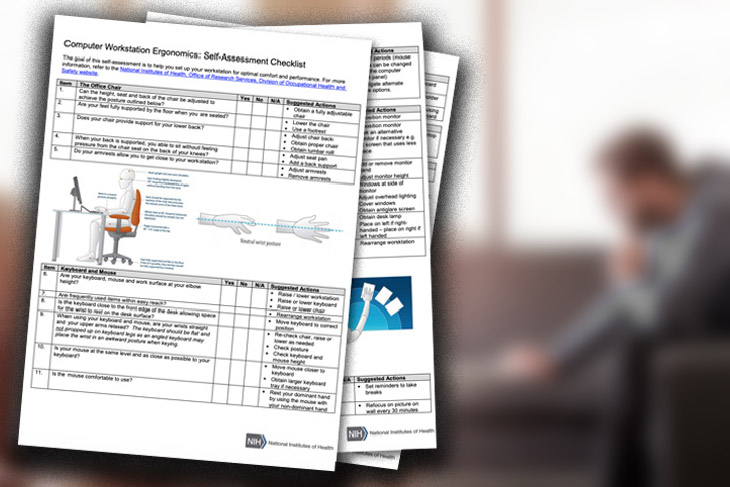February 27, 2022 / By admin
Working from home became quite ‘the thing’ over the past couple of years due to the pandemic. From initially being an alien concept for a large proportion of the population, the video meeting setup and home office environment has become ‘the norm’ at an impressive pace – mainly because we had no other choice. Since the full on ‘working from home’ lockdown, we have had the ‘go back to the office,’ ‘work from home if you can’, ‘go back to the office if you can – but don’t take public transport’ and various in-between scenarios. It feels as though many office setups have settled into a very adaptable hybrid working setup to suit the company and the individuals.
Of course, it would be great if we all had a dedicated office in our house that was soundproofed, neutral and calming, with an ergonomically designed desk and chair and natural light streaming through the expansive windows overlooking our stunning landscaped gardens. Then, on the days where we spend time in the office, the atmosphere is fun and relaxed, and time is spent catching up with the latest developments on projects and a bit of office gossip.
However, for the majority of us, hybrid reality is still more likely to be a semblance of a home office in a spare room or a laptop balanced on one end of the kitchen table whilst trying to make sure the time in the office is as productive as possible.
If that’s you, then taking a few minutes to stand back, and reassess the space you actually have for working at home and in the office, really could pay dividends. Implementing some simple, inexpensive adjustments really can improve productivity, mood and health enormously.
So, here are RRA’s top tips for making the best of a workspace to minimise stress and improve workspace health :
Physical comfort
Whether you are working in the office or, if you do have to work at the kitchen table, it is still worth trying to have an adjustable desk chair with lumbar support. Even the best dining chairs are not designed for working at a computer, so this is one area that is worth some investment.
Once you have your chair, and ideally a proper desk, but even at a normal table, it is vital that you check your positioning using the Self-Assessment checklist from the National Institute of Health.

Light
It may be tempting to use that underutilised dark corner at home, but this could be detrimental to both your concentration and productivity – and you simply will not want to work there. Instead, acknowledge your working area is an important part of your life, for now at least – and maybe for quite a few months to come. Whilst at home and in the office, try to position yourself in a well-lit area, ideally near a window to get plenty of natural light. It is even better if your window has a good view to encourage you to exercise your eyes by looking away from the screen regularly.
Add one or two desk lamps with a soft, gentle light for days when the weather is dull or for evening working.
Colour
Whilst many of the online images of offices have bold colours which look striking in the photos, such décor can be distracting and may not provide the calm atmosphere you need to concentrate. A light, neutrally coloured area will allow you to focus on the task at hand and increase productivity. If you can’t control the office colours, try calming colours around your desk and the areas directly in your view.
Storage
If possible, have a good amount of storage close by and use it! Clutter-free desks really are better for inducing a focussed, working environment. This might be difficult if you are working on the kitchen table, but even some baskets under the table that you can organise supplies into will keep them close by, whilst also keeping distracting clutter out of your vision.
Ventilation and temperature
No one likes a stuffy workplace so try keep the airflow moving and, ideally, have an open window if the weather allows. It is not only good for you, but helps keep your computer ventilated too.
Temperature can be a tricky one to get right, especially if males and females are working together as research has shown that females generally respond to temperature stress more than males and suffer more from cold extremities i.e. hands and feet. However, we do not work well if too hot or too cold, so it is worth finding your own comfortable temperature to maximise productivity.
Acoustics
We may not be able to control all the sounds, but with lots of meetings happening over the internet, trying to minimise background noise is an important consideration to many people. In the office see if there is a quiet area, such as an underused board room, where you can move to work to when extra concentration is needed. Or, perhaps, request to work from home on those days. At home, there are the obvious things, shut doors, buy the children some headphones and let your household know you are in a meeting. Less obvious is to ensure you have some softer surfaces or soft furnishings around you, they help to deaden and absorb sound.
Plants
One of the current trends in architecture is ‘biophilic design,’ which means having plants in the building. The benefits of plants in the office are well established, but it seems their presence goes way beyond producing extra oxygen for us and looking pretty. Their ability to absorb pollutants is significantly beneficial and research has proven that just looking at plants helps lower stress indicators in the body. Even having pictures of plants or natural spaces can trigger mental and physical benefits, so, green up your area with some natural images and real plants for a boost.

Aroma
Often overlooked when we are thinking about the visual and functional aspects of a working space, the aroma can have a profound effect on your comfort. Of course, bad smells are not going to help, so try to avoid potentially smelly areas, for example, try to avoid being near the window above the outdoor bins. Then perhaps add a pleasant aroma to the area, a humidifier will help you avoid dry eyes and adding some essential oils, such as citrus scents or rosemary, is supposed to increase alertness and concentration.
Healthy Habits
Finally, try to really nail those healthy habits from day one:
- Take a break from the computer at least every 15 minutes.
- Remember to stand up, move away from your desk and stretch regularly.
- Check your posture is right for work.
- Set time limits and ‘leave your work.’ This can be a tough one when working at home, but it is important to have boundaries and separate home life and work life.
- Eat lunch away from your desk and take breaks.
- At the end of each work session take five minutes to tidy the area so it’s clean, ready and welcoming for your return.
(And don’t forget to water the plants).
Sign up to our newsletter to keep up to date with all the RRA Architects news.
